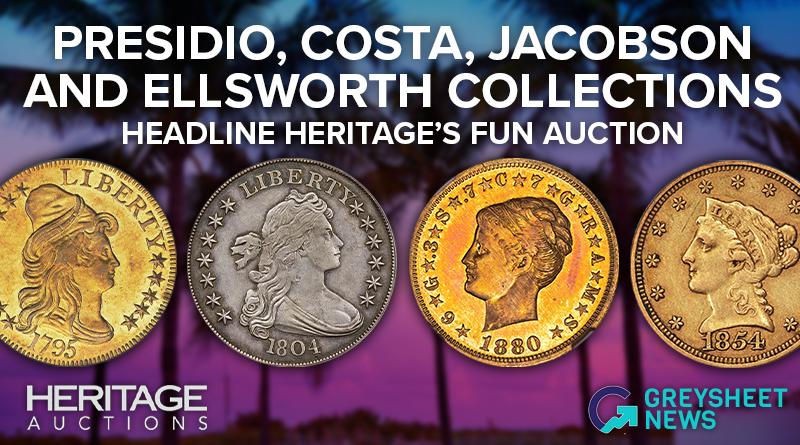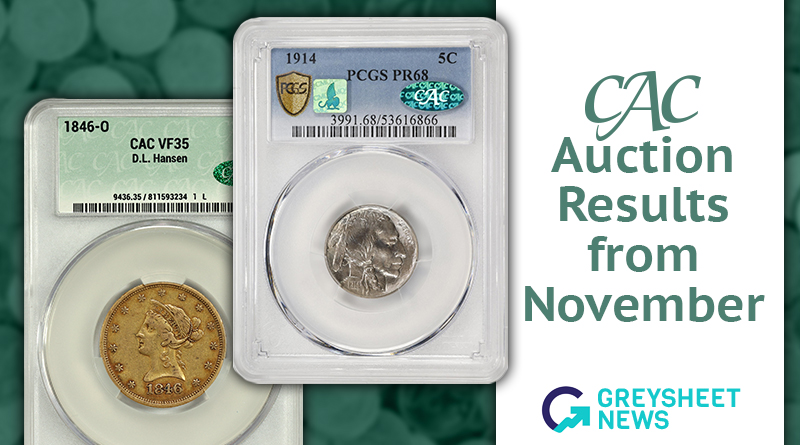Greysheet & CPG® PRICE GUIDE
- U.S. Coins /
- Pattern Coinage /
-
(1856) Pattern Values
About This Series
History and Overview
The 1856 Flying Eagle cent is a very well-known popular rarity, as these cents have formed the focus of attention since the time they were struck. Experiments that had been conducted at the Mint since 1850 for a smaller diameter cent came to a conclusion, and a new alloy, today known as copper-nickel (consisting of 88% copper and 12% nickel), was found to be superior to other tested alloys.
The 1856 Flying Eagle cent has the distinction that both sides are copies of something else—the obverse derived from Gobrecht’s silver dollar and the reverse from Longacre’s own earlier work. The diameter of the cent was reduced to three-quarters of an inch, so that four pieces, arranged side by side, would span three inches—perhaps a handy guide for measuring.
Many strikings of the 1856 Flying Eagle cent were in fact restrikes, although this makes no market difference today. Original pieces struck in 1856 were sent to congressmen, newspaper editors, and others of influence to acquaint them with the new design. The total number of these originals struck is not known, but the figure is estimated at nearly 1,000 pieces.
Probably beginning in spring 1859, the highly prized 1856 Flying Eagle cent became one of the most important items for sale as part of the vast production of restrikes under the aegis of Director Snowden, there being an insatiable demand for them. On the market, pieces sold for $1 or more, not a remarkable figure today in the early 21st century, but in 1859 equal to a day’s pay for many people. New dies were made with the date of 1856, and to make them especially attractive to numismatists, were given highly polished Proof surfaces. These were produced in large quantities, perhaps 1,500 to 2,000 over a period of time, but again no records were kept; the distribution was secret. Beyond the standard 1856 pattern Flying Eagle cent (J-180), a few other pattern cents were made, mostly restrikes. Theses are delineated below. No patterns of higher denominations are known to have been struck.
Collecting Perspective
The 1856 Flying Eagle cent is far and away the most plentiful of all pattern coins today, and at least a couple thousand exist. No matter, it is also one of the most expensive—a paradox to be sure, but such things are part of the allure of the pattern series.
Since the late 1850s, the 1856 Flying Eagle cent has been the Holy Grail, a “must have” for generations of numismatists. While made as a pattern, this piece was soon adopted by collectors of the regular series, and today it is considered to be the first date in the Flying Eagle set, which includes the more numerous regular issues of 1857 and 1858. It is likely that pieces offered today in grades showing wear, up to and including, say, AU-58, are originals made in 1856 or early 1857. Proofs are nearly all restrikes. The marketplace does not differentiate originals from restrikes, and the point is moot, except that the subject is of interest to specialists. Collectors of Flying Eagle and Indian Head cents have forum in the pages of Longacre’s Ledger, published by a society of enthusiasts. Richard Snow, for one, has studied the die differences of 1856 Flying Eagle cents in detail, and today “Snow numbers” are used by specialists to differentiate them.
Beyond the J-180 1856 Flying Eagle cent, other patterns dated this year are very elusive.
Catalog Detail
Legal Disclaimer
The prices listed in our database are intended to be used as an indication only. Users are strongly encouraged to seek multiple sources of pricing before making a final determination of value. CDN Publishing is not responsible for typographical or database-related errors. Your use of this site indicates full acceptance of these terms.



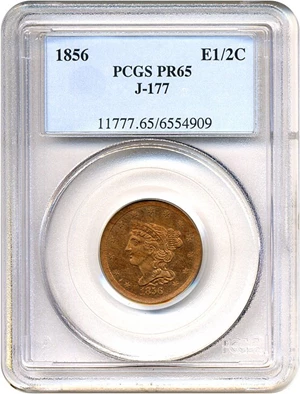




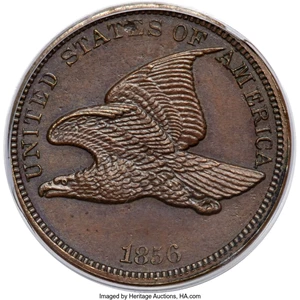






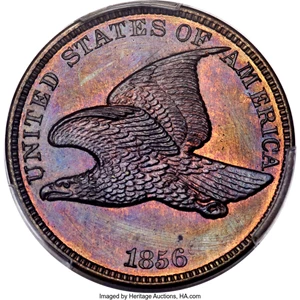
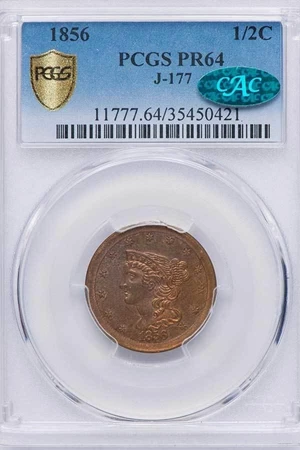
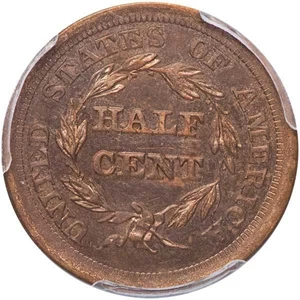
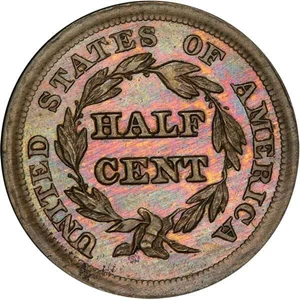
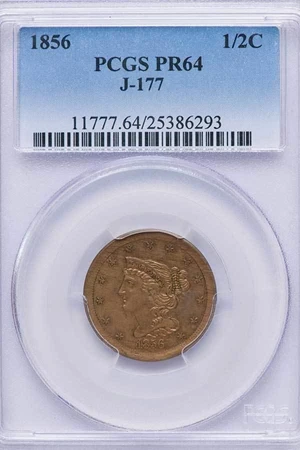
| Patterns (1856) | Value Range | Favorite | |||
|---|---|---|---|---|---|
| Patterns (1856) | Value Range | ||||
|
-
|
||||
|
$20,000
-
$39,500
$20,000 - $39,500
|
||||
|
$28,000
-
$39,500
$28,000 - $39,500
|
||||
|
$42,000
-
$50,500
$42,000 - $50,500
|
||||
|
-
|
||||
From the Greysheet Marketplace
Buy Now: $3,695.00
Buy Now: $2,890.63
Buy Now: $120,000.00
Buy Now: $38,900.00
Buy Now: $5,500.00
Buy Now: $37,000.00
Buy Now: $3,121.88
Buy Now: $37,000.00
Buy Now: $31,500.00
Buy Now: $125,000.00
Related Stories (powered by Greysheet News)
View all news
Greysheet Catalog Details
History and Overview
The 1856 Flying Eagle cent is a very well-known popular rarity, as these cents have formed the focus of attention since the time they were struck. Experiments that had been conducted at the Mint since 1850 for a smaller diameter cent came to a conclusion, and a new alloy, today known as copper-nickel (consisting of 88% copper and 12% nickel), was found to be superior to other tested alloys.
The 1856 Flying Eagle cent has the distinction that both sides are copies of something else—the obverse derived from Gobrecht’s silver dollar and the reverse from Longacre’s own earlier work. The diameter of the cent was reduced to three-quarters of an inch, so that four pieces, arranged side by side, would span three inches—perhaps a handy guide for measuring.
Many strikings of the 1856 Flying Eagle cent were in fact restrikes, although this makes no market difference today. Original pieces struck in 1856 were sent to congressmen, newspaper editors, and others of influence to acquaint them with the new design. The total number of these originals struck is not known, but the figure is estimated at nearly 1,000 pieces.
Probably beginning in spring 1859, the highly prized 1856 Flying Eagle cent became one of the most important items for sale as part of the vast production of restrikes under the aegis of Director Snowden, there being an insatiable demand for them. On the market, pieces sold for $1 or more, not a remarkable figure today in the early 21st century, but in 1859 equal to a day’s pay for many people. New dies were made with the date of 1856, and to make them especially attractive to numismatists, were given highly polished Proof surfaces. These were produced in large quantities, perhaps 1,500 to 2,000 over a period of time, but again no records were kept; the distribution was secret. Beyond the standard 1856 pattern Flying Eagle cent (J-180), a few other pattern cents were made, mostly restrikes. Theses are delineated below. No patterns of higher denominations are known to have been struck.
Collecting Perspective
The 1856 Flying Eagle cent is far and away the most plentiful of all pattern coins today, and at least a couple thousand exist. No matter, it is also one of the most expensive—a paradox to be sure, but such things are part of the allure of the pattern series.
Since the late 1850s, the 1856 Flying Eagle cent has been the Holy Grail, a “must have” for generations of numismatists. While made as a pattern, this piece was soon adopted by collectors of the regular series, and today it is considered to be the first date in the Flying Eagle set, which includes the more numerous regular issues of 1857 and 1858. It is likely that pieces offered today in grades showing wear, up to and including, say, AU-58, are originals made in 1856 or early 1857. Proofs are nearly all restrikes. The marketplace does not differentiate originals from restrikes, and the point is moot, except that the subject is of interest to specialists. Collectors of Flying Eagle and Indian Head cents have forum in the pages of Longacre’s Ledger, published by a society of enthusiasts. Richard Snow, for one, has studied the die differences of 1856 Flying Eagle cents in detail, and today “Snow numbers” are used by specialists to differentiate them.
Beyond the J-180 1856 Flying Eagle cent, other patterns dated this year are very elusive.
Catalog Detail
Legal Disclaimer
The prices listed in our database are intended to be used as an indication only. Users are strongly encouraged to seek multiple sources of pricing before making a final determination of value. CDN Publishing is not responsible for typographical or database-related errors. Your use of this site indicates full acceptance of these terms.










 Loading more ...
Loading more ...









